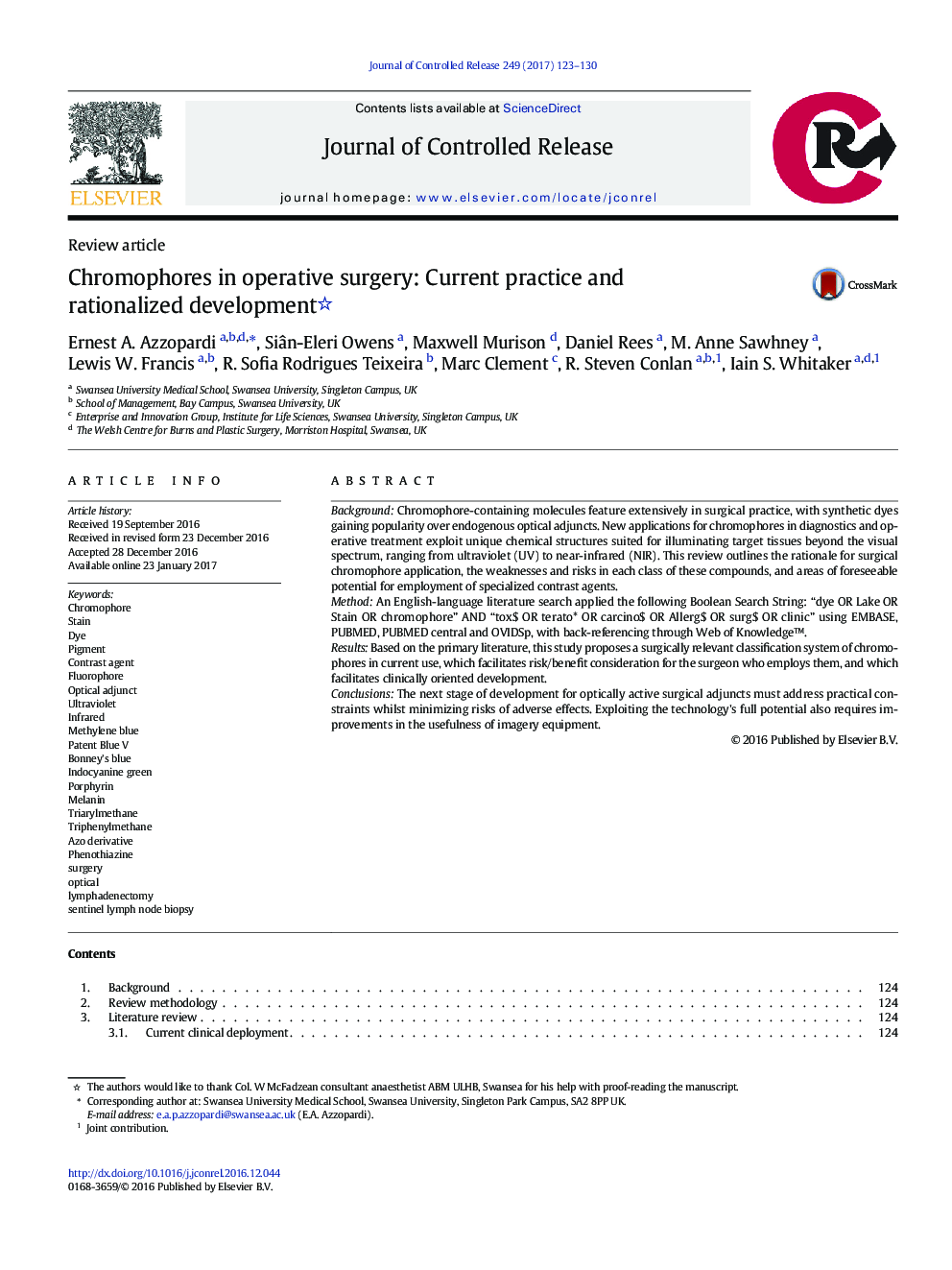| Article ID | Journal | Published Year | Pages | File Type |
|---|---|---|---|---|
| 5433841 | Journal of Controlled Release | 2017 | 8 Pages |
BackgroundChromophore-containing molecules feature extensively in surgical practice, with synthetic dyes gaining popularity over endogenous optical adjuncts. New applications for chromophores in diagnostics and operative treatment exploit unique chemical structures suited for illuminating target tissues beyond the visual spectrum, ranging from ultraviolet (UV) to near-infrared (NIR). This review outlines the rationale for surgical chromophore application, the weaknesses and risks in each class of these compounds, and areas of foreseeable potential for employment of specialized contrast agents.MethodAn English-language literature search applied the following Boolean Search String: “dye OR Lake OR Stain OR chromophore” AND “tox$ OR terato* OR carcino$ OR Allerg$ OR surg$ OR clinic” using EMBASE, PUBMED, PUBMED central and OVIDSp, with back-referencing through Web of Knowledgeâ¢.ResultsBased on the primary literature, this study proposes a surgically relevant classification system of chromophores in current use, which facilitates risk/benefit consideration for the surgeon who employs them, and which facilitates clinically oriented development.ConclusionsThe next stage of development for optically active surgical adjuncts must address practical constraints whilst minimizing risks of adverse effects. Exploiting the technology's full potential also requires improvements in the usefulness of imagery equipment.
Graphical abstractDownload high-res image (106KB)Download full-size image
